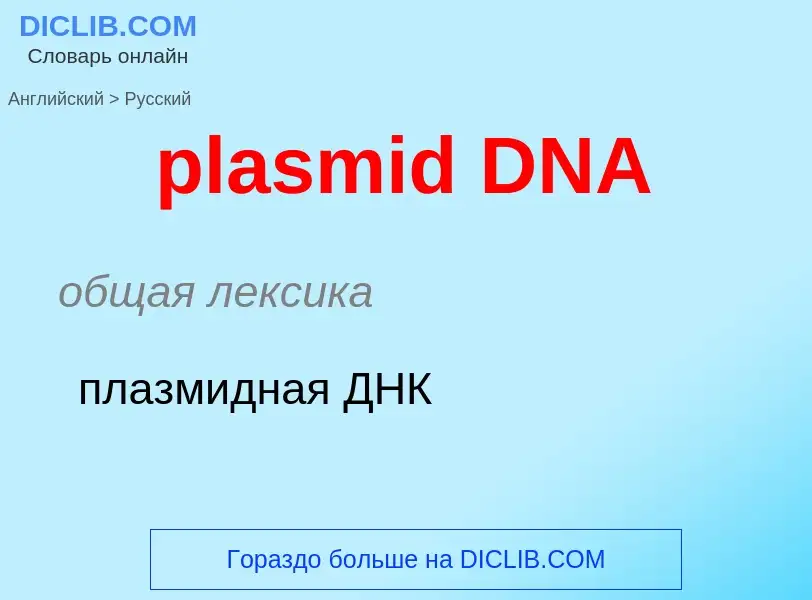Tradução e análise de palavras por inteligência artificial ChatGPT
Nesta página você pode obter uma análise detalhada de uma palavra ou frase, produzida usando a melhor tecnologia de inteligência artificial até o momento:
- como a palavra é usada
- frequência de uso
- é usado com mais frequência na fala oral ou escrita
- opções de tradução de palavras
- exemplos de uso (várias frases com tradução)
- etimologia
plasmid DNA - tradução para russo
общая лексика
плазмидная ДНК
общая лексика
плазмидный вектор
['plæzmid]
общая лексика
плазмида
биология
эписома
существительное
биология
плазмида
эписома
Definição
Wikipédia
A transfer DNA (T-DNA) binary system is a pair of plasmids consisting of a T-DNA binary vector and a vir helper plasmid. The two plasmids are used together (thus binary) to produce genetically modified plants. They are artificial vectors that have been derived from the naturally occurring Ti plasmid found in bacterial species of the genus Agrobacterium, such as A. tumefaciens. The binary vector is a shuttle vector, so-called because it is able to replicate in multiple hosts (e.g. Escherichia coli and Agrobacterium).
Systems in which T-DNA and vir genes are located on separate replicons are called T-DNA binary systems. T-DNA is located on the binary vector (the non-T-DNA region of this vector containing origin(s) of replication that could function both in E. coli and Agrobacterium, and antibiotic resistance genes used to select for the presence of the binary vector in bacteria, became known as vector backbone sequences). The replicon containing the vir genes became known as the vir helper plasmid. The vir helper plasmid is considered disarmed if it does not contain oncogenes that could be transferred to a plant.

![[[Electron micrograph]] of a DNA fiber bundle, presumably of a single bacterial chromosome loop [[Electron micrograph]] of a DNA fiber bundle, presumably of a single bacterial chromosome loop](https://commons.wikimedia.org/wiki/Special:FilePath/DNA Under electron microscope Image 3576B-PH.jpg?width=200)

